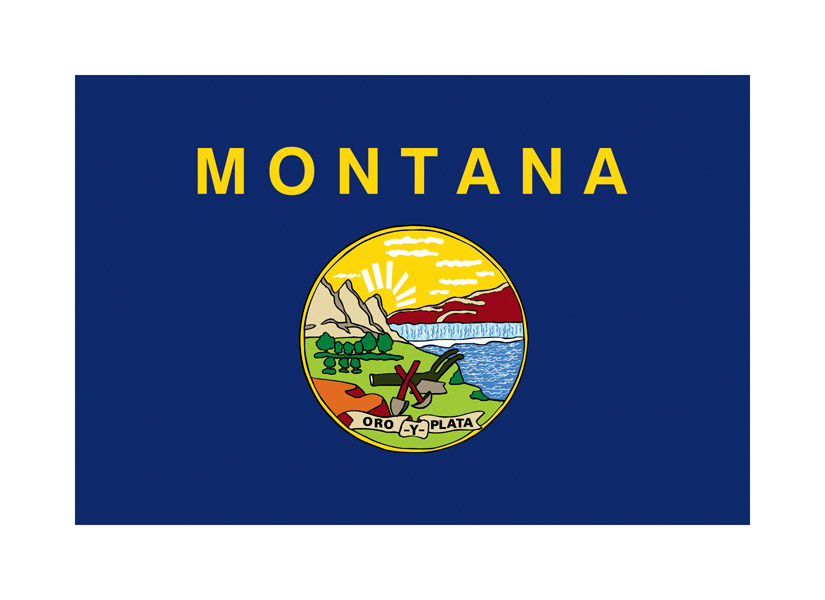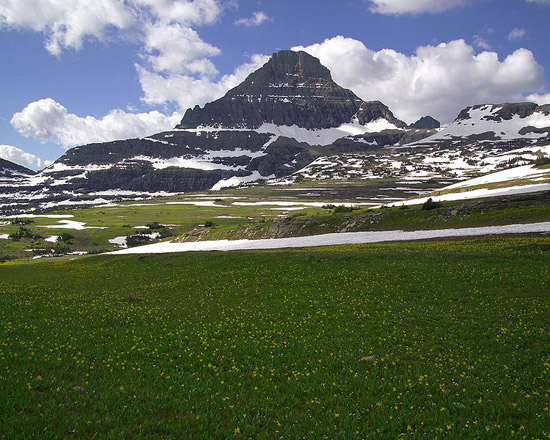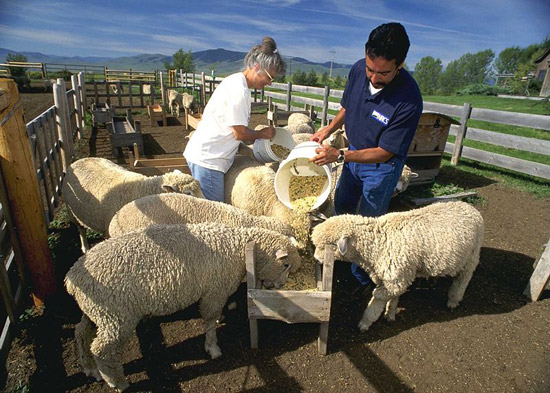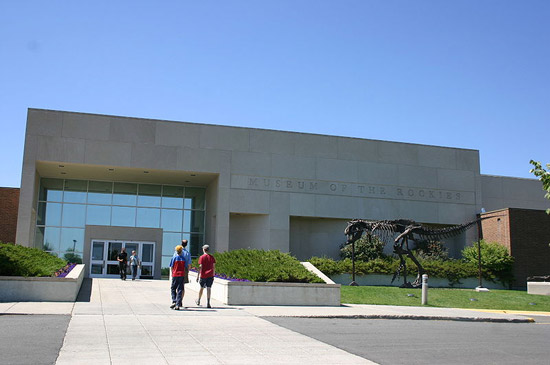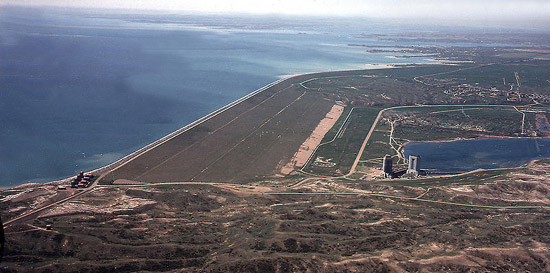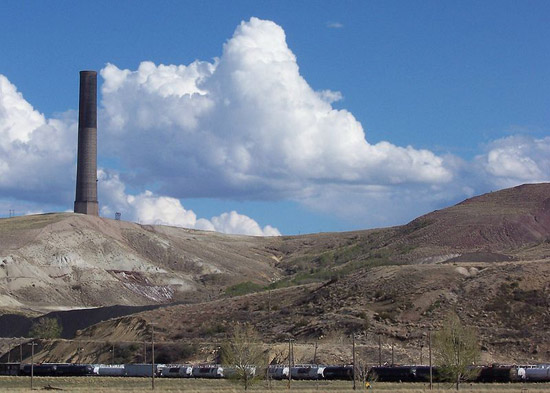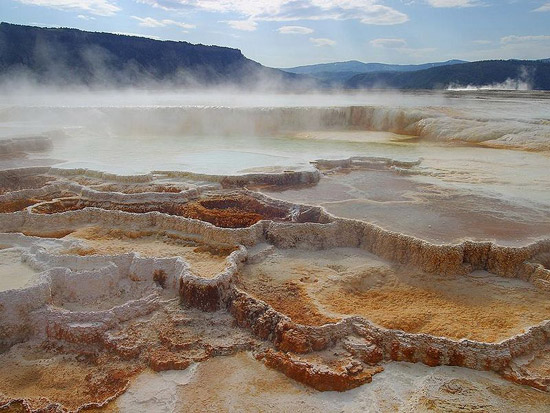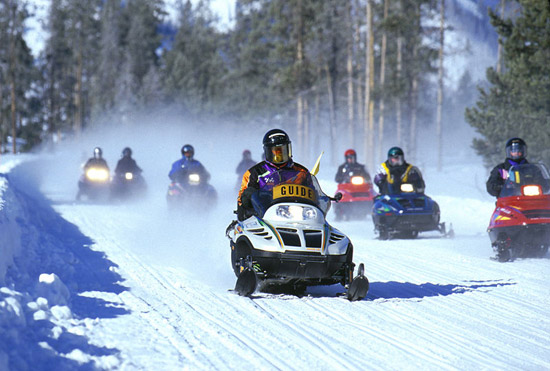INTRODUCTION
Montana, known as Big Sky Country due to its panoramic views, is the fourth largest state but the 44th in population. The Rocky Mountains sprawl across the westernmost third of the state, in which hard rock mining, tourism, and lumber make up major portions of the economy. Ranching, farming, oil drilling, and coal mining are important industries in the east, which is part of the Great Plains.
Montana thrives on outdoor activities such as hunting, fishing, and summer and winter sports. Three of the five entrances to Yellowstone National Park are located in Montana, which also boasts Glacier National Park and the Beartooth, Castle, Crazy, and Snowy mountain ranges. Consequently, about a third of Montana’s employees work in service industries. Montana’s per capita income of $30,688 is near the lowest fifth of the country.
ECONOMIC HISTORY
The Louisiana Purchase of 1803 brought the area of Montana under U.S. jurisdiction. At this time, fur trading was the territory’s main business until gold was discovered in the 1850s. By the time Montana became a state in 1889, the gold boom had attracted miners from other states and Native Americans were corralled into federal reservations.
Cattle ranching became popular alongside mining for silver and copper as well as gold, which resulted in the growth of mining towns. Copper mines in Montana produced roughly half the copper in the entire country by the end of the 19th century, and the wealthy mine owners controlled the newspapers, politics, and government of the state until the diversification of Montana’s economy in the 1940s. A railroad system constructed from 1880 to 1909 enabled greater access to market for livestock and for the mining industry.
The revised Homestead Act of 1906 encouraged young couples to settle in the state, and Montana’s population more than doubled by 1920. A major drought and the Great Depression of the 1930s severely hampered the economy, until the New Deal revived the farming and silver mining sectors and financed public works projects.
After World War II, manufacturing grew slowly, and the production of coal and crude oil increased. Insects, drought, and falling prices in the 1980s reduced farm income, but by the 1990s, the manufacturing and construction industries had strengthened the economy. Today, tourism is a big draw for people who want to "get away from it all" and enjoy the still-pristine beauty of Montana’s great outdoors.
AGRICULTURE
Montana produces an estimated $3.2 billion worth of crops and livestock annually, with wheat the leading crop at $1 billion, followed by hay, at $474 million, and potatoes, at $47 million. Livestock, cattle, and calves bring in $1.3 billion, with milk and dairy products adding $54 million.
About 100 Montana farms have been converted to organic farms, with an average income of $42,000 per farm. Montana’s lumber industry generates sales of $710 million annually and employs more than 9,000 workers. In addition, Montana usually ranks among the 10 largest producers of honey in the nation, with annual sales of more than $12 million.
BANKING AND FINANCE
Some 75 banking institutions do business in Montana, with total assets of $20.7 billion and a combined income of approximately $200 million annually. No bank in Montana has failed since the turn of the century, despite the effects of the recent worldwide economic crisis.
COMMUNICATIONS
Thirty-three newspapers and 16 magazines are published in Montana, and 40 television stations and 164 radio stations broadcast in the state. There are 16 telephone companies in Montana. The telecommunications industry has more than $500 million worth of infrastructure assets in services and invests more than $50 million annually in new facilities and services. More than 630 employees work in the industry, earning about $50 million in salary and benefits yearly.
CONSTRUCTION
Montana’s construction industry employs some 25,500 workers in the residential and nonresidential sectors. Nonresidential construction spending comes to an estimated $1.5 billion annually, and the average pay of workers is around $38,000. More than 95 percent of Montana’s 6,000 construction firms employ fewer than 20 workers. Before the recent economic crisis, there were 22 percent more construction workers employed in the state.
EDUCATION
Montana is home to slightly more than 500 elementary schools, almost 250 middle schools, and 185 high schools. The state has 24 universities and colleges, including four Native American tribal colleges. The number of students enrolled totals more than 47,000, resulting in state and local appropriations of more than $175 million. The more than century-old University of Montana has an enrollment of nearly 14,000 students and an endowment of $123 million, while the similarly aged Montana State University educates more than 12,500 students and is the only institution in the world that offers a master of fine arts degree in science and natural history filmmaking. Montana teachers earn an average salary of about $38,000, which the National Education Association ranks among the five lowest paying states.
ENERGY
As Montana possesses a quarter of the nation’s coal reserves, coal is the source of 64 percent of the electricity produced in the state, followed by hydroelectric sources at 31 percent and oil at five percent. Total revenues of the electric companies operating in Montana are $1 billion, with approximately a third from each of the residential, commercial, and industrial sectors. The American Wind Energy Association reports that at the end of the first decade of the 21st century, Montana has 165 megawatts of installed wind energy capacity, which it plans to almost double to some 300 megawatts.
ENTERTAINMENT
Similar to other states, Montana offers incentives to movie production companies to film there, such as free furniture and equipment, waiving of state sales taxes, fuel, electricity, and reimbursement of lodging taxes. In addition, many locations are available for filming without charge, and the state offers free location scouting. Since 2005, the film industry has added more than $38 million to Montana’s economy and provided more than 180 jobs annually.
INSURANCE
There are some 1,500 insurance companies operating in Montana with roughly 24,000 employees, resulting in revenues of $2 billion annually. In addition, the state collects approximately $40 million in fees and premium taxes. The Montana Comprehensive Health Association offers policies to some high-risk residents with pre-existing conditions, but some 16 percent of those who live in the state are uninsured.
MANUFACTURING
More than 35,000 employees work for over 2,000 manufacturers in Montana, shipping goods worth more than $8 billion. The largest sector produces lumber and wood, followed by printing and publishing, and food products. The average manufacturing wage is around $40,000 annually.
MINING AND EXTRACTION
Coal leads Montana’s $1 billion mining sector, with $403 million worth produced annually. This is followed by gold, silver, platinum ($110 million annually), palladium ($102 million), sand and gravel ($80 million), lead and zinc ($75 million), and stone ($19 million). More than 5,000 work in mining, with an average yearly income of $56,000. Montana Tunnels Mining produced more than 1.5 million ounces of gold and 28 million ounces of silver from 1990–2010, and has an annual payroll of around $10 million. The Golden Sunlight gold mine produces about 120,000 ounces a year. Montana’s petroleum refinery workers earn an average of approximately $90,000 a year.
NONPROFIT
Not including foundations or religious organizations, there are just fewer than 5,500 nonprofits in Montana, employing slightly fewer than 37,000 workers at a combined annual salary of almost $1.1 billion. Montana has 183 foundations, which hold more than $400 million in assets, and which give more than $20 million in grants each year. The state’s 1,670 nonprofit organizations report some $4.9 billion in assets. Montana’s 137 nonprofit arts organizations provide nearly 2,000 full-time jobs and pay about $35.8 million in salaries, generating $13.5 million in tax revenues.
RETAIL
Due to Montana’s lack of sales tax, shoppers from neighboring Wyoming flock to buy in the state. Montana’s residents spend around $7.8 billion annually on retail purchases. As in other states, Walmart is a strong presence, with 10 supercenters and three discount stores. About 4,700 people work for Walmart in Montana, supporting nearly 12,000 supplier jobs. Walmart pays more than $8.1 million in corporate taxes to the state, and contributes $1.1 million in cash and in-kind donations to local Montana organizations.
TECHNOLOGY
Montana’s small technology industry employs some 5,000 workers, with an annual payroll of about $185 million. The communication and software services industries provide most of the high-tech jobs in the state. The average salary in the technology sector in Montana is nearly $35,000. In 2009 Montana invested $107 million in improving the state’s information technology infrastructure, from a combination of state and federal funds and user fees. This investment follows the passage in 2001 of the Montana Information Technology Act, which requires each state agency to develop an information technology plan that becomes part of Montana’s Strategic Plan for Information Technology.
TRANSPORTATION
Three major interstate highways traverse Montana, which is also served by eight well-traveled U.S. routes. The largest railroad in the state is the BNSF Railway, the world’s largest single consumer of petroleum-based fuel. Amtrak also serves the northern part of the state. There are seven primary commercial airports and some 115 smaller public fields, as well as an estimated 450 private airstrips. A total of 1.3 million passengers travel through Montana’s airports annually. Low interest grants and loans are provided by the Montana Department of Transportation Aeronautics Division for airport and aviation purposes.
TRAVEL AND TOURISM
Montana’s fastest growing industry is tourism, which brings more than 10.6 million visitors every year to enjoy the state’s natural beauty. Tourism generates some $3 billion for the state economy, and supports nearly 37,000 jobs. Some of Montana’s most popular tourist spots are ghost towns, battlefields, and of course, Yellowstone National Park, which welcomes more than 3.1 million tourists annually. Around 37 percent of visitors to Montana come for art and cultural activities.
SPECIAL INDUSTRIES
Agritourism in Montana, as in some other states, is a way for farmers and ranchers to supplement their income by hosting visitors. About 10 percent of Montana’s farms include some kind of recreational program for tourists, including farm tours, hands-on chores, harvesting one’s own produce, or dude ranches. Such programs make up 16 percent of the average farm’s income. Fishing, wildlife watching, hiking, and shopping are the major tourist activities in the state, most of which can be done on Montana’s farms. Popular activities include horseback riding, rodeos, guided fishing, riding herd, and photo safaris.
Copyright © 1993-2025 World Trade Press. All rights reserved.


